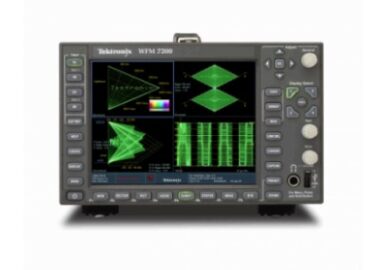Accumulated Depreciation on Your Business Balance Sheet
Compared with the straight-line method, it doubles the amount of depreciation expense you can take in the first year. Below is a break down of subject weightings in the FMVA® financial analyst program. As you can see there is a heavy focus on financial modeling, finance, Excel, business valuation, budgeting/forecasting, PowerPoint presentations, accounting and business strategy. If applying the CapEx as a percentage of sales method, divide CapEx by sales to find capital expenditure as a percentage of sales. Use these percentages to create an assumption about future capital expenditures as a percentage of sales. Multiply this against projected sales to find a forecast for capital expenditure.

This allows a company to write off an asset’s value over a period of time, notably its useful life. For year five, you report $1,400 of depreciation expense on your income statement. The accumulated depreciation balance on your balance sheet should be $7,000. The desk’s net book value is $8,000 ($15,000 purchase price – $7,000 accumulated depreciation). Depreciation on the income statement is for one period, while depreciation on the balance sheet is cumulative for all fixed assets still held by an organization. When an asset is sold, debit cash for the amount received and credit the asset account for its original cost.
A fixed asset’s value will decrease over time when depreciation is used. This affects the value of equity since assets minus liabilities are equal to equity. Overall, when assets are substantially losing value, it reduces the return on equity for shareholders.
Declining Balance
The depreciation expense for accounting does not fully reflect the actual used value of the equipment. It is more of an approximation that gives an estimate of the actual value used. For this reason, outsourcing bookkeeping: a cost-saving opportunity there are different methods to estimate the depreciation expense. If the asset’s accumulated depreciation is equivalent to the asset’s original cost, then it is classified as fully depreciated.
This calculation is done to show how much the company would receive if it sold the asset today. The net book value figure is on the balance sheet and calculated by subtracting the accumulated depreciation account from the total cost of the asset. The accumulated depreciation is calculated by subtracting the salvage value (residual value) from the asset and then calculating the depreciation on the balance sheet.
Accounting Adjustments/Changes in Estimate
At the end of an asset’s useful life, its carrying value on the balance sheet will match its salvage value. On the other hand, when it’s listed on the balance sheet, it accounts for total depreciation instead of simply what happened during the expense period. Your balance sheet will record depreciation for all of your fixed assets.
Most businesses have assets that are used to create a product or service. Over the years, these assets may incur wear and tear, reducing the dollar value of those assets. Asset Panda understands that the financial side of your business can get extremely complicated. Trying to manage all of the aspects that affect your profits can quickly become overwhelming if you don’t have a system to manage them. We created our software platform to help you simplify everything related to your assets, so you can put your attention on the more complicated aspects of your company.
Understanding Depreciation, Depletion, and Amortization (DD&A)
The income statement or Profit and Loss is the other most important financial statement a company produces. It shows the company’s revenues and expenses for a set period, a week, month, or year. You can find the net book value on the balance sheet by subtracting accumulated depreciation from the total asset cost. This figure represents how much the company would receive if it sold the asset today. As part of your financial reporting, you report this drop in value as your depreciation. The easiest method to report your depreciation is called the straight-line depreciation method.
NuStar Energy 2Q earnings dip as company boosts balance sheet … – San Antonio Express-News
NuStar Energy 2Q earnings dip as company boosts balance sheet ….
Posted: Thu, 03 Aug 2023 18:51:20 GMT [source]
Depreciation expense is recorded on the income statement as an expense or debit, reducing net income. Accumulated depreciation is not recorded separately on the balance sheet. Instead, it’s recorded in a contra asset account as a credit, reducing the value of fixed assets. Depreciation is an accounting method for allocating the cost of a tangible asset over time.
What is a Depreciation Schedule?
Keep in mind, though, that certain types of accounting allow for different means of depreciation. Let’s assume that if a company buys a piece of equipment for $50,000, it may expense its entire cost in year one or write the asset’s value off over the course of its 10-year useful life. Most business owners prefer to expense only a portion of the cost, which can boost net income. Using the straight-line method is the most basic way to record depreciation.

A common system is to allow a fixed percentage of the cost of depreciable assets to be deducted each year. This is often referred to as a capital allowance, as it is called in the United Kingdom. Deductions are permitted to individuals and businesses based on assets placed in service during or before the assessment year. Canada’s Capital Cost Allowance are fixed percentages of assets within a class or type of asset.
This account includes the total amount of long-term debt (excluding the current portion, if that account is present under current liabilities). This account is derived from the debt schedule, which outlines all of the company’s outstanding debt, the interest expense, and the principal repayment for every period. Return on equity (ROE) is an important metric that is affected by fixed asset depreciation.
- Depreciation ceases when either the salvage value or the end of the asset’s useful life is reached.
- As the asset ages, accumulated depreciation increases and the book value of the car decreases.
- For example, a positive change in plant, property, and equipment is equal to capital expenditure minus depreciation expense.
- It can thus have a big impact on a company’s financial performance overall.
- Property, Plant, and Equipment (also known as PP&E) capture the company’s tangible fixed assets.
Depreciation helps companies avoid taking a huge expense deduction on the income statement in the year the asset is purchased. Under the double-declining balance (also called accelerated depreciation), a company calculates what it’s depreciation would be under the straight-line method. Then, the company doubles the depreciation rate, keeps this rate the same across all years the asset is depreciated, and continues to accumulate depreciation until the salvage value is reached. The percentage can simply be calculated as twice of 100% divided by the number of years of useful life.
ways to calculate depreciation in Excel
If you’re lucky enough to use an accounting software application that includes a fixed assets module, you can record any depreciation journal entries directly in the software. In many cases, even using software, you’ll still have to enter a journal entry manually into your application in order to record depreciation expense. Depreciation expense is considered a non-cash expense because the recurring monthly depreciation entry does not involve a cash transaction.
Accumulated depreciation allows investors and analysts to see how much of a fixed asset’s cost has been depreciated. For example, if a company buys a vehicle for $30,000 and plans to use it for the next five years, the depreciation expense would be divided over five years at $6,000 per year. Each year, depreciation expense is debited for $6,000 and the fixed asset accumulation account is credited for $6,000. After five years, the expense of the vehicle has been fully accounted for and the vehicle is worth $0 on the books.
Companies must be careful in choosing appropriate depreciation methodologies that will accurately represent the asset’s value and expense recognition. Depreciation is found on the income statement, balance sheet, and cash flow statement. It can thus have a big impact on a company’s financial performance overall. The accumulated depreciation account is a contra asset account on a company’s balance sheet. It appears as a reduction from the gross amount of fixed assets reported.
